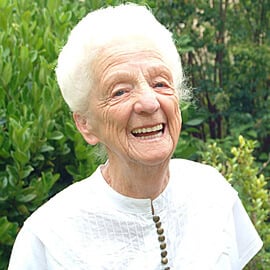A quick review of the village and care sector.
A lot of care operators have been rearranging their businesses in the care space for Consumer Directed Care and digital disruption. But the village sector has simply been enjoying demand exceeding supply, with one or two exceptions.
Demonstrating that Government policy can change the landscape overnight, the $1.2B ACFI funding reduction in the May budget for ‘high care’ residents in response to what has been called ‘gaming’ the system, assessing residents at a higher need level they present to gain more ACFI funding to treat them, is hitting the sector.
The impact on revenue according to Ansell Strategic is $5,475 per resident a year. For a 100 bed facility this is a $547,500 hit each year. More than significant.
This has burst the bubble of the listed care operators. Estia listed at $5.75 in December 2014 – 18 months ago – and peaked at $7.73 last November but has been sliding ever since. In the last 5 weeks it has dropped 20% to $4.72. This means it has lost over $200m in value even though it has nearly doubled its number of aged care beds.
Both Regis and Japara have lost 20% in their share prices in the past 6 months and the trend continues to be down.
These three would rank in the Top Quartile of aged care profits per bed so spare a thought for the Not For Profit operators who average about $5 per bed per day profit – they are really challenged which is why ACSA and LASA are working so hard leading up to this election.
And ACSA and LASA are both aggressively implementing change. Both have worked hard over several years to move their members from a federated state model to a unified national model. This significantly changes their member funding – the cash is now in Canberra to coordinate advocacy nationally, plus training.
The CEO’s of both ACSA and LASA have also moved aside, having led the change phase. John Kelly is moving to another national position and Patrick Reid has joined StewartBrown.
Elsewhere the Not For Profits have been getting into shape. For instance, in the past 12 months RSL Care (QLD) has merged with RDNS in VIC. Combined they have a business worth $1B and a turnover of $500M. They have 6,000 staff and 25,000 customers.
Anglican Retirement Villages and Anglicare have merged in NSW creating the fifth largest village operator in the country, but largely based in Sydney.
Other Not For Profits are selling non-core villages like Southern Cross Care and Blue Care in QLD, Masonic Homes in QLD and SA.
We should include Australian Unity here who paid the NSW Government $114M for 50,000 home care customers.
After nearly a decade of stability, Not For profit CEOs are transitioning as well, having set up new directions. Ray Glickman at Amana in WA, Robyn Batten at Blue Care in QLD, Andrew Larpent at Southern Cross SA plus a number of others, have all engineered their own departures after major structural change in preparation for CDC.
On the village sector side, there has been a lot less action.
Again the Not For Profits are leading the development program. While each operator may not have a large number of projects on the go, many have single significant projects underway. For instance Presbyterian Care in Sydney has one major project with an end value of $180M plus 4 small projects. Villa Maria Catholic Homes in VIC has up to 10 projects in development. Churches of Christ in QLD is building and acquiring.
In the private sector Stockland is the leading developer of the listed operators but mainly as part of its greenfield urban developments. They have 500 homes in development. Aveo had a target of 180 units this financial year.
The big private action is Aveo buying the 15 village Freedom Aged Care for $210M with the goal of rolling out its care model across 28 of its villages to boost its serviced apartments. This is creating a new market segment.
And we can’t pass up NZ’s Ryman who now have three village sites within eight kilometres of each other in Melbourne. They intend to have 1,200 residents by 2020.
In summary, looking forward the Government will be pushing the care sector hard to minimise the cost of home care and aged care and business models are being forced to adapt.
The big private care operators will have their profit models challenged and this will affect their ability to attract capital to expand.
The Not for Profits are rearranging their businesses to both survive and prosper. They have great balance sheets, missions that are not short term shareholder driven and great brands. They also have direct contact with the majority of home care customers.
January 2017 (well after the election) will be fascinating.






